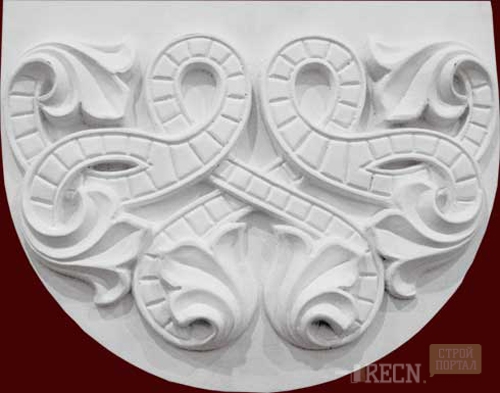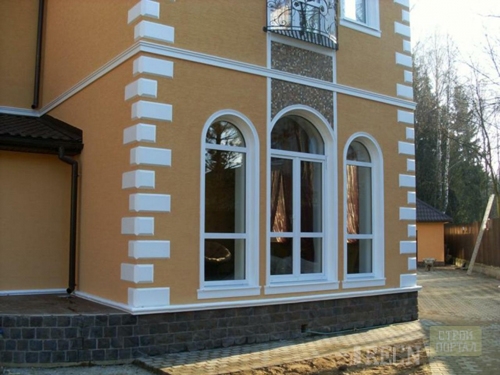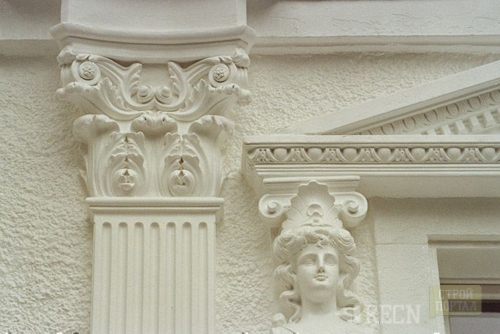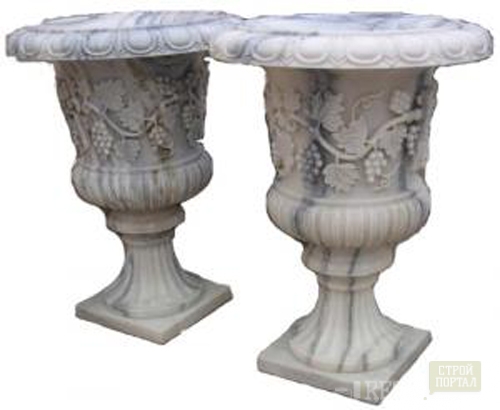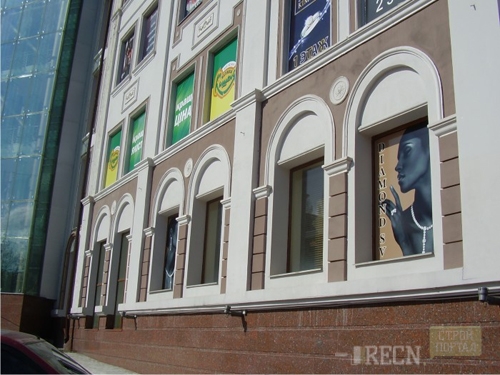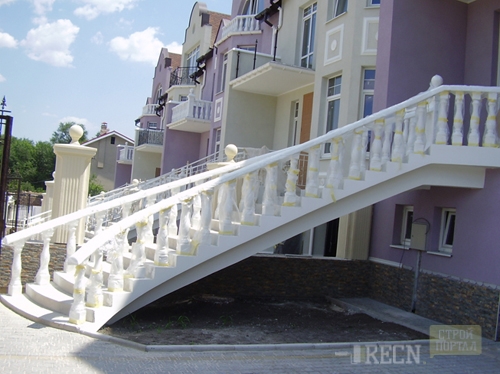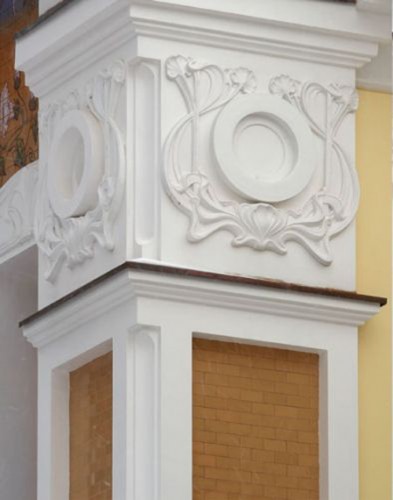
Facade stucco - materials, characteristics, installation Walls,Building materials
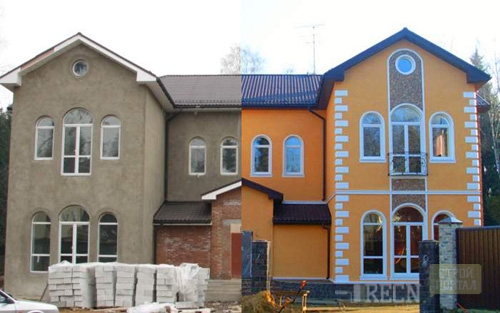
Whatever the finish of your building, it will look neglected and unfinished if the window and doorways remain standard. Why not make them facade stucco? This is an affordable transformation method in a short time. The stucco looks perfectly at any building without exception. A variety of styles will allow you to choose what you like.
Content
Columns, semi-column, socles, moldings, bas-reliefs, balusters, slopes, arches, pilasters, decorative locks and eaves, bassages. This is not the entire list of stucco parts that are manufactured by manufacturers. Every day the range increases, embodying all the designs of the designer.
Choosing the facade stucco, pay attention not only to the beauty or style, but also on the material from which the design is made. The price depends on the quality of the material used in the manufacture. Artificial stucco is more expensive than natural several times.
Lepunina additionally "loads" the wall. Before installing, be sure to evaluate the weight of "future beauty". It is possible to mount too heavy designs, only first strengthen the wall to avoid deformation and collapse.
Types of facade stucco:
Polyurethane and foam stucco
Easily mounted on special glue or liquid nails. You can work with lightweight materials alone. So you will save on workers and heavy construction techniques.
Polyurethane - synthetic material produced from isocyanate and polyol. Their composition contains components that react, which leads to the formation of the final product. Adjusting the level of components in the composition of the production of various density and state, from liquid to solid.
Polyurethane stucco:
Polyfoam is a product produced by gas saturation of a polymer. As a result of the improvement of technologies, a polyurethane foam can be found on sale, polystyrene foam and other stucco from the foam susceptible to punctures, cuts.
Details of the stucco are cut out of blanks (bars) on machines.
Pros:
- Easy in work
- Comparative cheapness of materials
- Savings on a construction team and technology
Minuses:
- Details are subject to mechanical damage
- Even minor scratches are visible and require replacement.
- The restoration of a small area is impossible (seams will be seams). Replacement of the whole part.
Foam stucco:
Leping from plaster
The progenitor of stucco from modern materials was Leping from plaster(natural material). Gypsum powder is mixed with water to thickness sour cream and poured into the form. After frozen, remove and grind. Along with the newest representatives, she remains on leading positions. Gypsum products are fragile and heavy, but processing opportunities are endless. Most often, they are made manually, which allows "drawing" the smallest details.
With fixing plaster parts, glue and screws are used.
Pros:
- Natural material
- It is possible to manufacture a fragment entirely at the factory or "on the spot"
- Products "pour" in forms, after that we are modified manually
- Restoration of Okurivania (minor scratches)
Minuses:
- Fragile
- Bulky and heavy, and therefore without a lifting crane can not do
- Additional expenses for brigade and equipment
- Details are sensitive to humidity and require coating with a protective substance
Leping from Polymerbeton
Externally resembles marble. Polymerbeton is a mixture of polymer and concrete (sand, cement, water, crushed stone, plasticizers). If we compare the product from polymerbetone and gypsum, then the durability is still on the side of the first. Manufacturers guarantee an excellent state of stucco even after 100 years.
In the manufacture, it is possible to achieve any color and texture. For strength, reinforcement is used. Unlike plaster, polymer concrete products are many times easier, which facilitates further processing and installation.
Pros:
- The most durable
- Production is possible "in place" and at the factory
- It is possible to achieve any texture and color
Minuses:
- Very heavy
- Require the presence of "heavy" techniques
- There is artificial material
- Complex in montage
Pepling from polystyrene
It is made of polymerized styrene, very similar to foam. Details are cut out of finished blocks. External difference is visible only by a specialist. Here is the whole thing in the magnitude of the bubbles, they are smaller. Some manufacturers have already achieved perfectly smooth surfaces.
Pros:
- Flexibility
- Ease
Minuses:
- Artificial material
- Over time, can yellow
Concrete stucco
It is famous for its strength. In large products there is also a reinforcement, which adds the structures of strength. For concrete, sand, cement and water are mixed, a little rubble is added. When installing bulky details without construction equipment, it is not necessary to do. Even a small plot of stucco requires the presence of a minimum of two people.
Pros:
- Natural material
- Durable
- Lasting
- Does not have restrictions in processing
Minuses:
- Heavy
- Problematized in montage
Pepling from polystyrene foam
It is made of foamed polymerized styrene. Easy and does not differ practically from polystyrene. The difference only in the material production technology. Facade elements are cut out of blanks on machines. The stucco of this type is desirable not to use the building at thenime where the likelihood of moisture is high.
Pros:
- Easy in work
Minuses:
- High hygroscopicity
- Artificial material
- Fragile
Take into account the possibility of restoration work. Elements made of plaster and concrete are easier to repair. Variants from lightweight materials will be repaired virtually possible. In case of damage, they must be replaced entirely.
The market presents types of stucco from lightweight materials with protective coating and without it. In the second case, the reinforcing layer will be applied. If you decide to make a stucco to order, you can provide sketches or pictures by the manufacturer and wait for individual decorations. You can also remove the measurements from the windows and doors and make fit for the supplier. You will be brought ready-made details that do not need to trim, you will only have to attach.
The best and reliable option is to hire specialists who will examine the wall for which the stucco must be fixed, make measurements, make items and install. That is, from the beginning to the end of the project will do everything themselves. In this case, you will be granted a guarantee, performers will be responsible for defects and durability allowed during installation. In the event of cracks, the coincidence is obliged to correct the flaws at its own expense.
Installation of facade stucco from foam
1. Preparation of the surface
- We remove the old finish (paint, whitewash) before plaster. She must hold hard.
- Check for strength (knock). All suspicious areas remove and "Zalatinate" with a new solution.
- After drying, we clean the wall and stucco from dust.
- Works can be carried out only at a temperature not lower than +5 degrees in dry weather. Humidity negatively affects the durability of the attachment.
2. Fastening stucco
- With the help of the level, we apply marking on the wall and, if necessary on the stucco (windowsill).
- Molding angles cut with stub.
- The heat-insulating mixtures for the facade are suitable for gluing, for example, from the CeresitT85, CT84, ST83 series. We apply the glue layer on the stucco, press.
- Remove the remnants of glue.
- For reliability, secure anchors or self-drawing.
- Holes fasteners "disguise".
3. Finishing coating
- In conclusion, we protect the design from seasonal exposure. We are coated with a primer suitable for your stucco (better clarify compliance when buying (ordering) stucco).
- We apply the finishing layer of paint.
If you need a slight adjustment of "problem places", remove the old fastener, dirt, wipe from dust. Apply a new layer of glue to a clean dry surface.
Mounting window stucco Look at the video:




